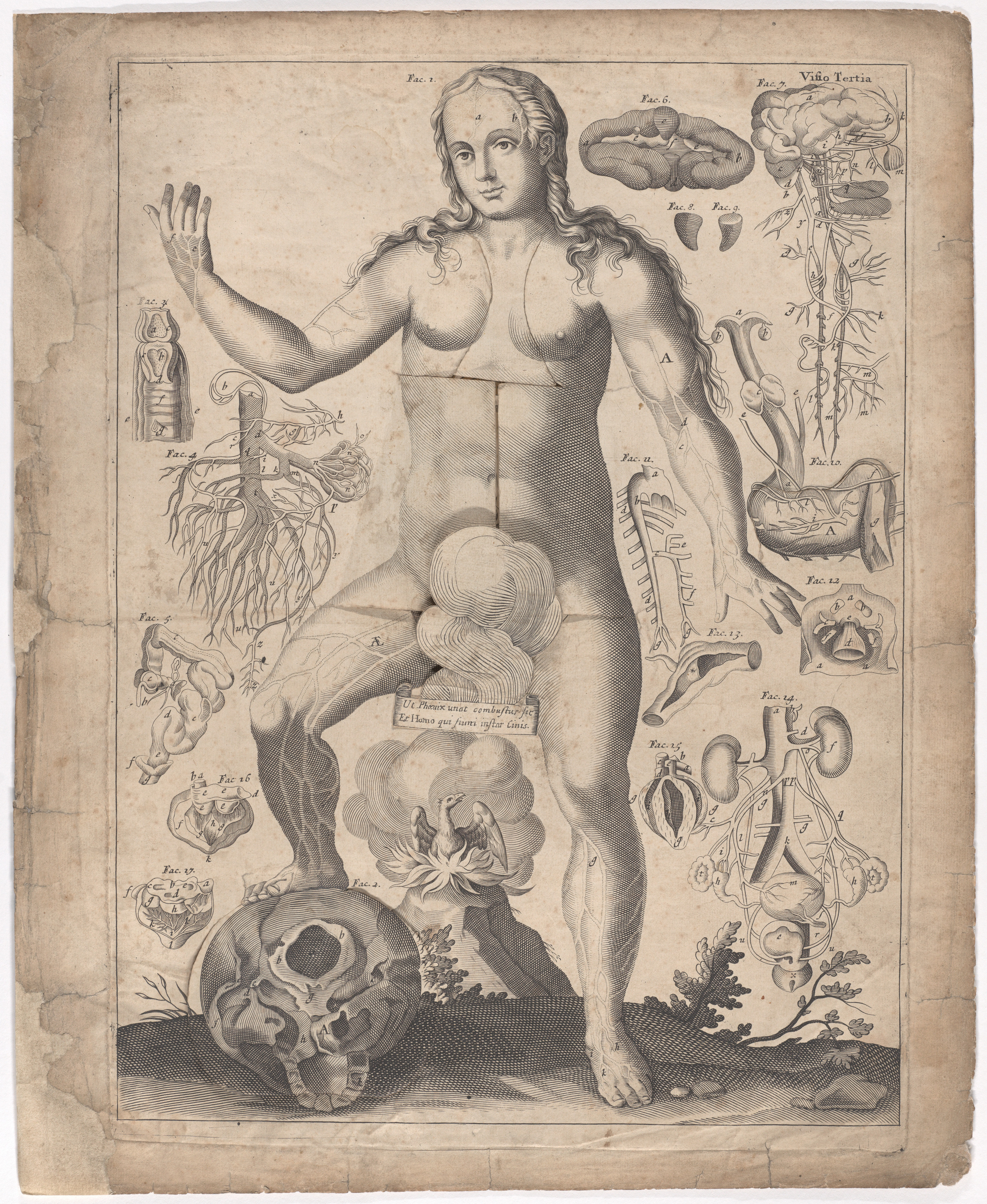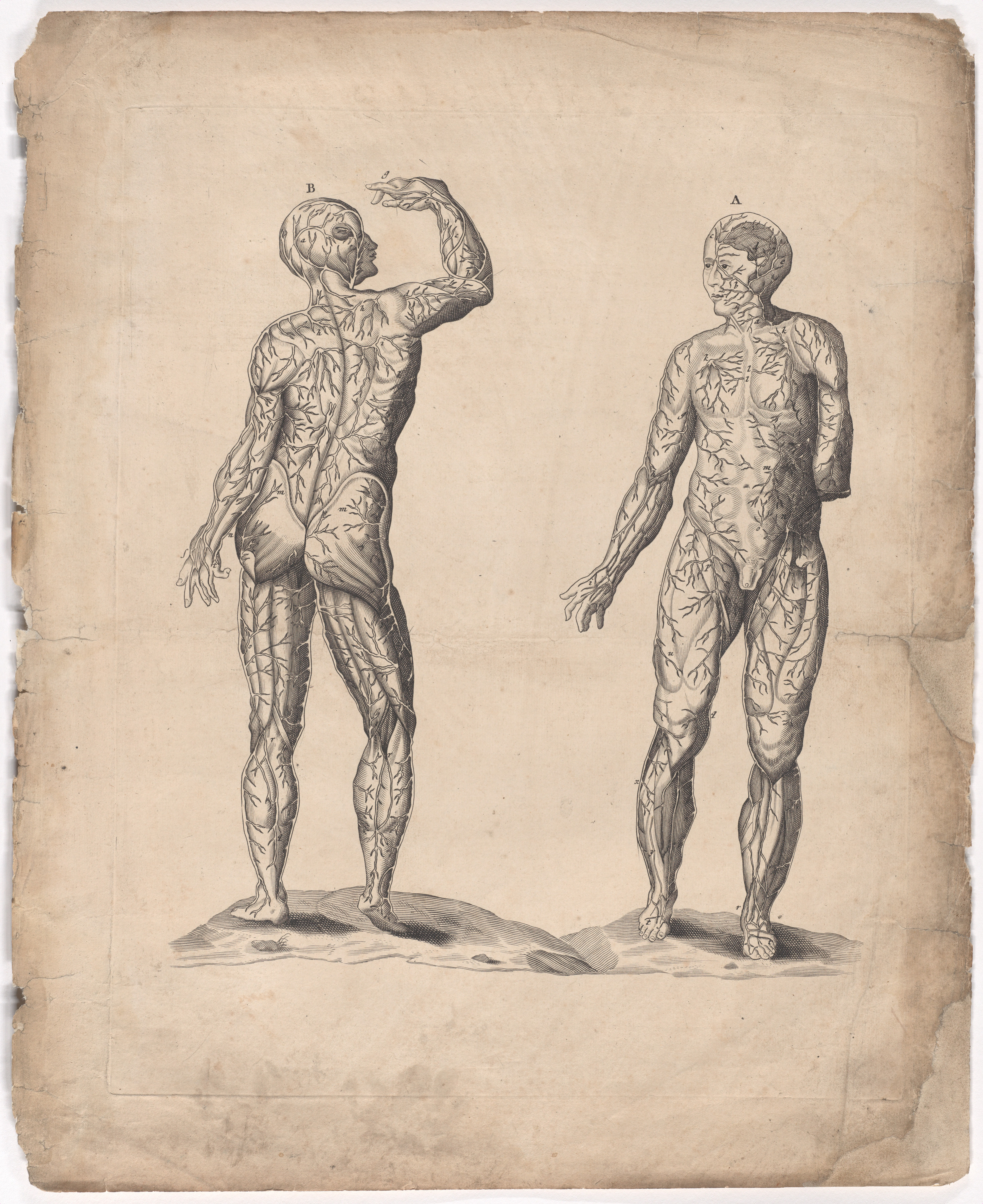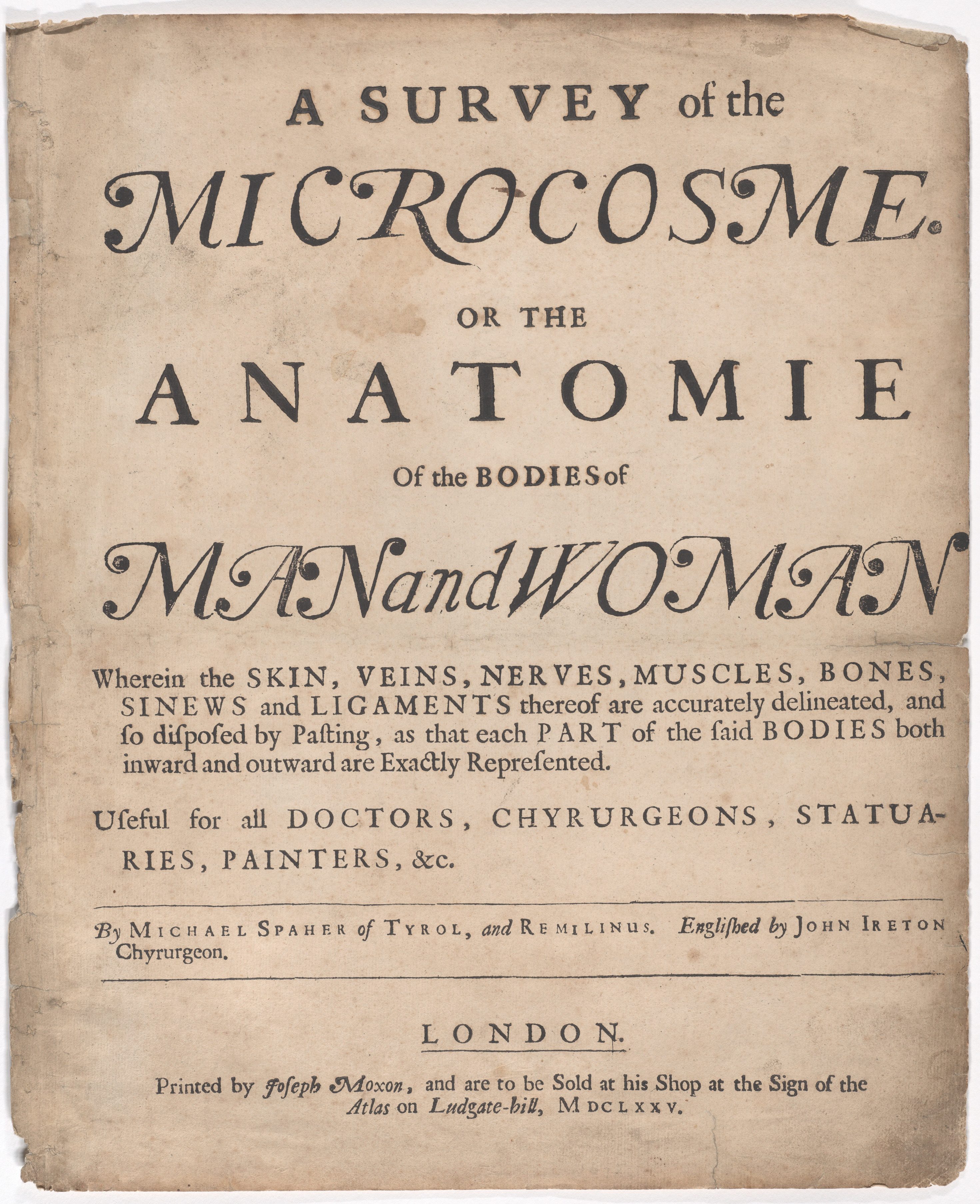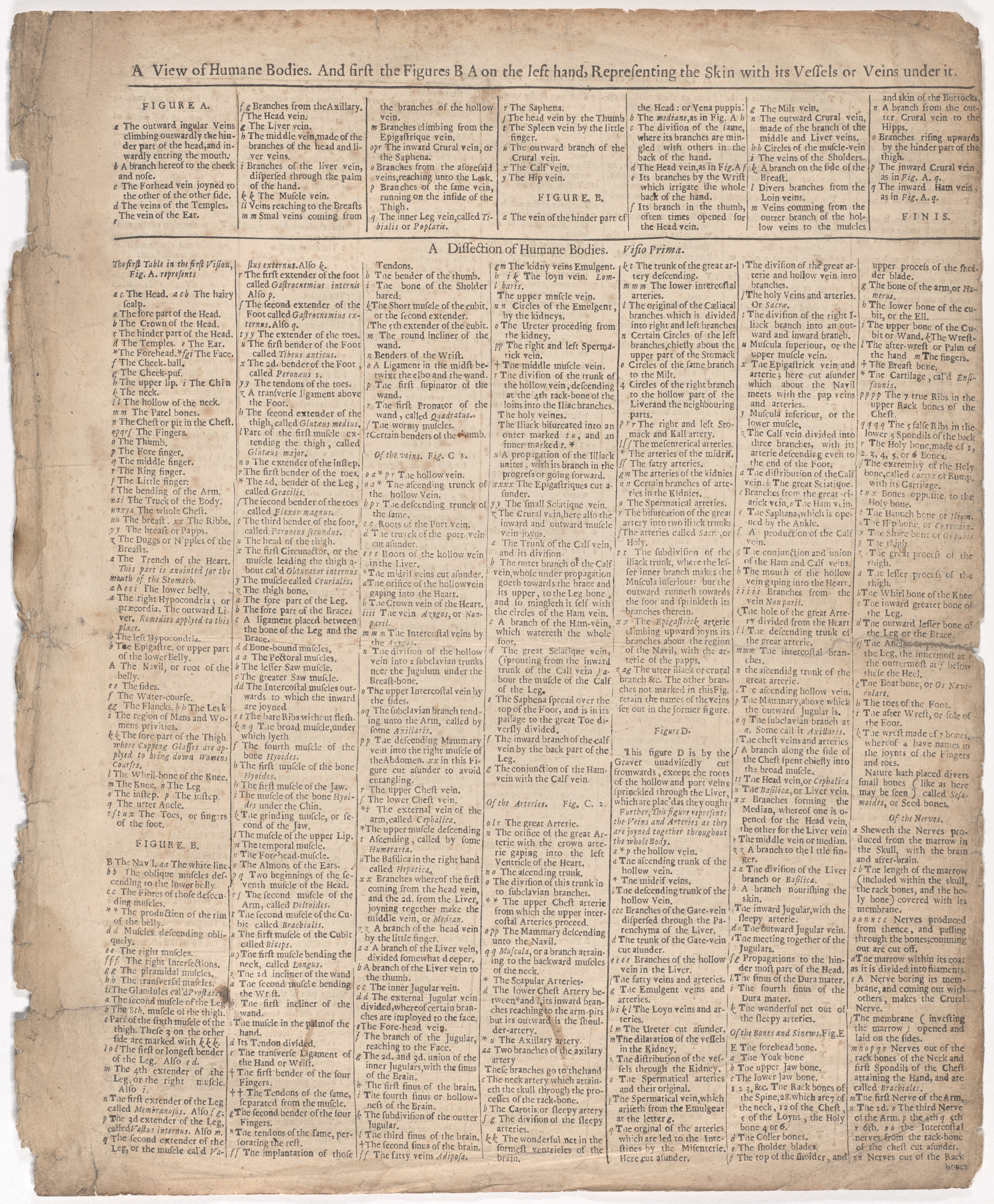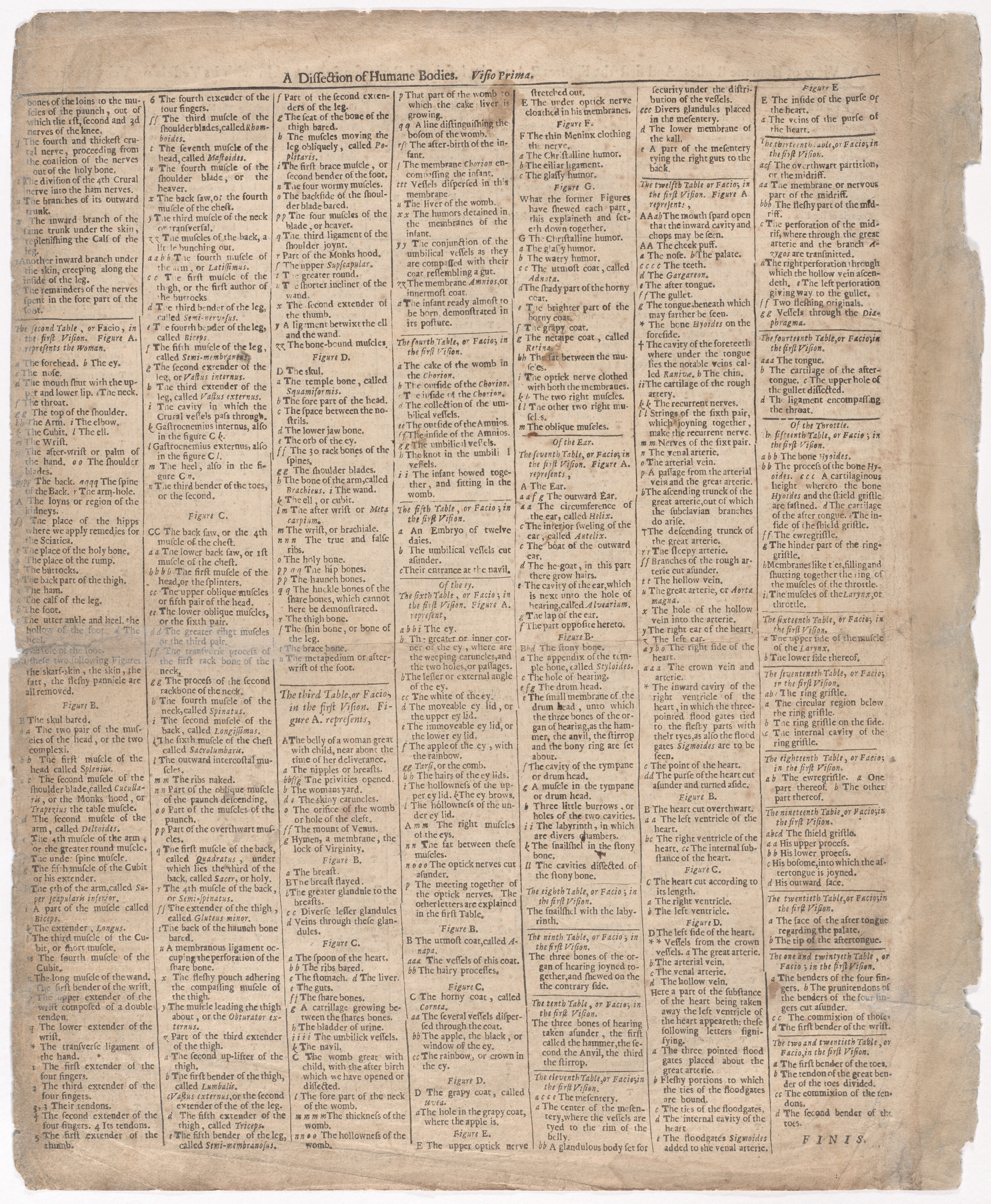A Survey of the Microcosme or the Anatomie of the Bodies of Man and Woman wherein the Skin, Veins, Nerves, Muscles, Bones, Sinews and Ligaments Thereof are Accurately Delineated, and so Disposed by Pasting, as that Each Part of the Said Bodies Both Inward and Outward are Exactly Represented. Useful for all Doctors, Chyrurgeons, Statuaries, Painters, &c.
Not on view
The anatomical image with attached moveable flaps that, when lifted, reveal underlying layers that illustrate the organs, blood vessels, and bones of the human body is a type of print that was produced throughout the sixteenth and seventeeth century. The many different language editions and reeditions testify to the popularity of this genre. The tradition goes back to Strasbourg artist Heinrich Vogtherr’s depiction of a seated woman of 1538 in which a flap on the woman’s belly can be lifted to reveal the organs inside.
The present piece illustrates the continuation of that tradition into the seventeenth century in England. The sheets originally formed a book that was later disbound. The work includes the title page, four engravings, and four pages of letterpress text explanations of the diagrams. The work was published by Joseph Moxon, a British publisher and mathematician, and dedicated to Samuel Pepys (1633-1703), best known for his diary, an important primary source about the period.
This image cannot be enlarged, viewed at full screen, or downloaded.
This artwork is meant to be viewed from right to left. Scroll left to view more.





